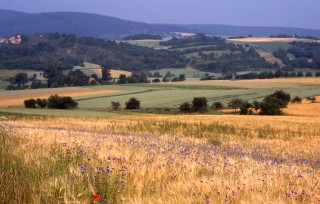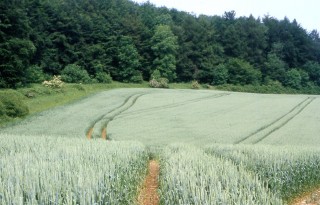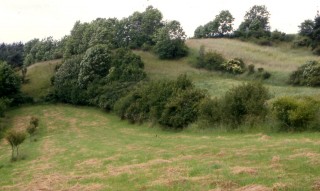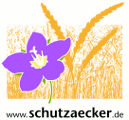Arable wild plants...

From the former diversity of colourful fields...
...like cornflower, poppy and chamomile have been colourful companions of arable crop production for hundreds of years. About three quarters of all arable weed species occurring in Germany were first introduced to Central Europe along with cereal cropping. Increasing economic pressure within the agricultural sector and the resulting intensification of weed control with herbicides over the last few decades have resulted in an increasing loss of species in arable field habitats. Nowadays, every second arable weed species can be found on the Red List Data Book of at least one German federal state.

... to today´s usual situation
Species decline due to intensive farming
Intensively managed cereal fields no longer provide adequate habitat for many animal species which are directly or indirectly dependant on arable weed species as food sources. The fauna of arable fields has declined sharply as a result.
In addition to chemical weed control, measures such as seed cleaning, improved soil cultivation, early stubble clearing and changes to the site from lime application, fertilisation and drainage have contributed to a dramatic loss of biodiversity in arable fields.

Calcarous fields altered to greenland resp. derelict land
Species decline due to set-aside
In the Central German uplands in particular, but also on poor sandy sites in the lowlands, arable fields have been abandoned. Set-aside or conversion into grassland mainly affects those sites that have traditionally been cultivated less intensively and therefore act as refuges for endangered species. Annual species that complete their vegetation cycle within one year after soil cultivation face adverse growth conditions when cultivation is discontinued and are often suppressed by perennial species.




